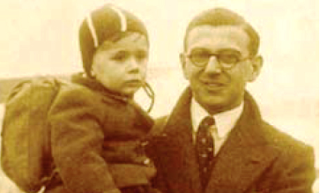It was just the two of them, brother and sister, out on the open ocean with hundreds of other desperate migrants, mostly Rohingya Muslims fleeing their homes in Myanmar. For nearly three months, the siblings comforted each other when rolling waves thrashed their boat, when their empty bellies ached and when they were beaten for trying to stand up to stretch their legs.
As the oldest, Mohammad Aesop - just 10 years old - knew it was his job to keep his 8-year-old sister safe. But with the Thai crew wielding guns and threatening to throw troublemakers overboard, he felt helpless.
Theirs was the first boat to wash ashore in Indonesia two weeks ago, followed by a number of other wooden trawlers crammed with hungry, dehydrated people. Many were abandoned at sea by their captains following a regional crackdown on human trafficking networks.
Mohammad and his sister, Untas Begum, lost their mother more than three years ago, when sectarian violence in Myanmar's troubled state of Rakhine reached its peak. She was killed by a machete during an attack at a market in the state capital, Sittwe. Her children were taken in by a relative, who struggled to care for them with little money for food.
Their father has been living in Muslim-majority Malaysia, one of the few places where Rohingya can find menial jobs and a semblance of acceptance. He decided it was time for his children to join him, and paid a broker in March to put them on a boat in the Bay of Bengal.
The siblings were forced to sit with their knees bent so that another person could be seated in between their legs - like human dominos stacked together as closely as possible to ensure the biggest payoff from ransoms of around US$ 2,000 per person demanded from the migrants' families after they left Myanmar's territorial waters.
To sleep, they simply leaned back into the chest of the person behind them. When their legs shook and ached from being locked in one position for so long, they were beaten for moving or trying to stand.
The heat on the boat was oppressive, and the stench of sweat and soured vomit was nauseating. They were given only a few spoonfuls of rice gruel twice a day. Fever, diarrhea and dehydration were common among the children and adults, but no medicine was provided. Untas said she once shivered while burning hot and freezing at the same time.
"We were given a little food and water, and we were on the sea for a long time," she said, sipping water casually though a straw, a precious commodity that such a short time ago was rationed to keep her alive during the journey. "We didn't have our mom or dad on the boat, so we were scared."
Fear and desperation have driven smugglers to flee their vessels following recent arrests and the discovery of dozens of mass graves in Thailand and Malaysia where migrants were held in the jungle before the floating camps were set up offshore. Mohammad said one night a smaller boat approached, and as the captain and crew left, they pointed guns at the people on the larger vessel and told them that anyone who tried to follow would be killed.
"He shot twice into the air. Everyone started screaming and crying," Mohammad said, adding that he threw his sister across his lap to try to shield her with his tiny body. "I thought they would kill all of us."











 />
/>
















